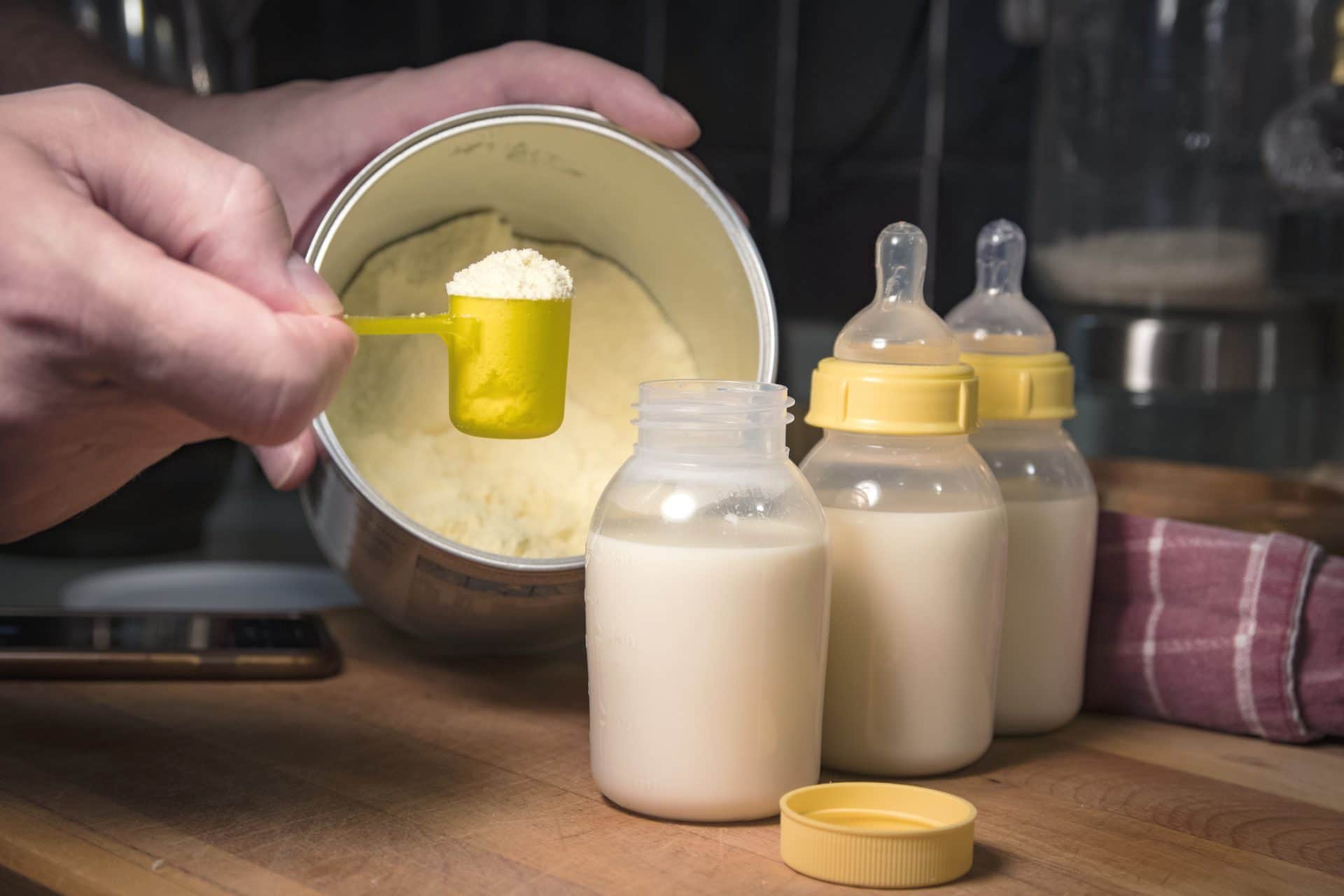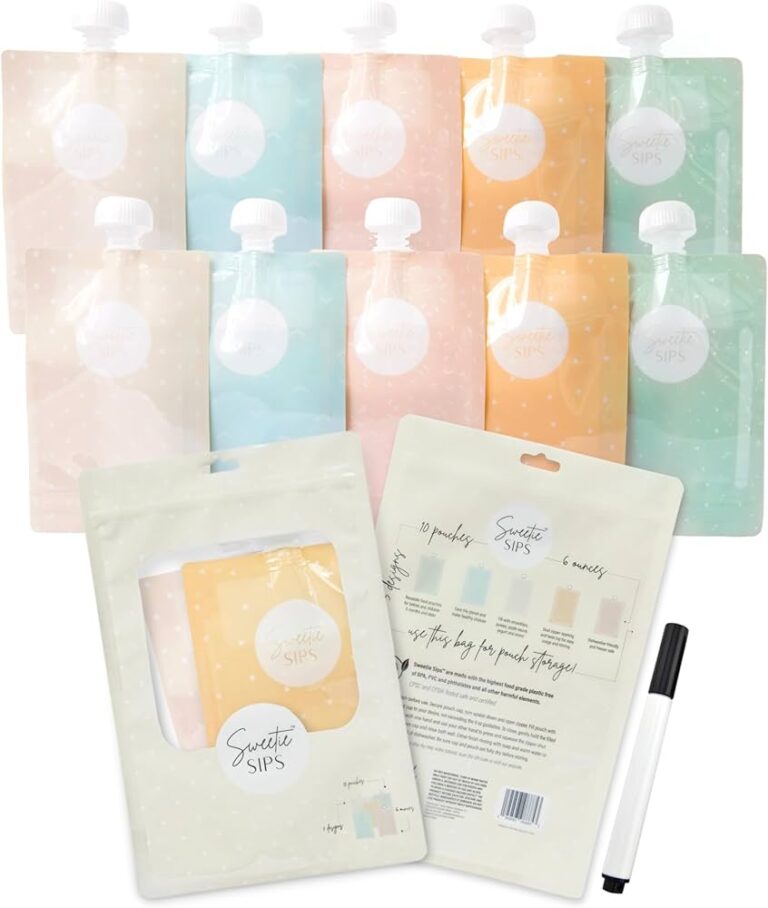How to Warm Cows Milk for Baby: Expert Tips
To warm cow’s milk for a baby, simply heat it up to room temperature or slightly warmer and always test the temperature before giving it to your baby. (“How to Warm Cow’s Milk for Baby: Serve room temperature or slightly warm.
Always test the temperature first before giving it to your baby. “) Giving cow’s milk to a baby can be a common concern for many parents. While some babies prefer milk at room temperature, others may find it more palatable when warmed.
As a parent, it’s essential to ensure that the milk is at a safe and comfortable temperature for your baby. We will explore different methods for warming cow’s milk for your little one.
Why Is It Important To Warm Cows Milk For Babies?
When it comes to feeding your baby, ensuring their comfort and digestion is crucial. This is why it is important to warm cows milk before serving it to your little one. Warm milk provides numerous benefits for your baby’s overall well-being, ensuring a smooth transition from breastfeeding or formula feeding to cow’s milk.
Importance Of Warm Milk For Baby’s Comfort And Digestion
There are two key reasons why warming cow’s milk is important for your baby’s comfort and digestion:
- Enhanced Digestion: Warm milk is easier for your baby’s sensitive digestive system to process. When milk is warmed, it undergoes a slight change in its molecular structure, making it gentler on your baby’s stomach. This can reduce the chances of discomfort, gas, and digestive issues that can arise when introducing cow’s milk to your baby’s diet.
- Mimicking Breast Milk: Warm milk provides a sensory experience similar to breastfeeding. Breast milk is naturally warm, and babies are accustomed to consuming liquids at body temperature. By warming cow’s milk, you are providing a familiar sensation for your baby, which can make the transition from breast milk or formula to cow’s milk easier.
By prioritizing the comfort and digestion of your baby, you can ensure that their transition to cow’s milk is smooth and enjoyable. Now, let’s explore the best ways to warm up cow’s milk for your little one.
Safety Precautions While Warming Cows Milk For Baby
When it comes to warming cow’s milk for your baby, ensuring the right temperature is crucial for their safety. Giving milk that is too hot can burn their delicate mouth and throat, while milk that is too cold may upset their little tummy. In this article, we will discuss important safety precautions to take while warming cow’s milk for your baby. It is vital to adhere to these precautions to ensure your baby’s well-being.
Ensuring The Right Temperature For Your Baby’s Safety
When it comes to warming cow’s milk for your baby, the right temperature is key. Here are a few safety measures to keep in mind:
- Always test the temperature before giving it to your baby. The milk should be warm, not hot, and should not exceed a temperature of 100°F (37.8°C). By testing it on the back of your hand or the inside of your wrist, you can ensure it is not too hot.
- Never use a microwave to warm cow’s milk for your baby. Microwaving can result in uneven heating, creating hot spots that can scald your baby’s mouth. It is best to avoid microwaving altogether and opt for safer warming methods.
- Use a bottle warmer or warm water bath to heat the milk. These methods provide a more controlled and gradual warming process, reducing the risk of overheating the milk.
- Avoid using boiling water to warm the milk. Boiling water can cause the milk to become too hot and may result in burns. Instead, use warm water that is below boiling temperature.
- Do not leave the milk unattended while warming. It is important to monitor the temperature and ensure it does not exceed the safe range for your baby.
By following these safety precautions, you can ensure that the cow’s milk is warmed to the appropriate temperature for your baby’s safety. Remember, always prioritize your baby’s well-being and take necessary precautions while handling their milk.
Methods To Warm Cows Milk For Baby
When it comes to feeding your baby, warming cows milk can make it more palatable and enjoyable. There are different methods you can use to warm cows milk for your little one. In this article, we will explore three popular methods: using a bottle warmer, heating milk on the stovetop, and using a warm water bath.
Using A Bottle Warmer
A bottle warmer is a convenient and efficient way to warm cows milk for your baby. Follow these steps to warm the milk using a bottle warmer:
- Fill the bottle warmer with water according to the manufacturer’s instructions.
- Place the bottle of cows milk in the bottle warmer.
- Turn on the bottle warmer and wait for it to heat the milk to the desired temperature.
- Always test the temperature of the milk on your wrist before feeding it to your baby to ensure it is not too hot.
Heating Milk On The Stovetop
If you don’t have a bottle warmer, you can also warm cows milk on the stovetop. Here’s how:
- Pour the desired amount of milk into a small saucepan.
- Place the saucepan on the stove over low heat.
- Stir the milk constantly to prevent it from scorching or forming a skin.
- Continue heating the milk until it reaches the desired temperature.
- Again, remember to test the temperature before giving it to your baby.
Using Warm Water Bath
Another method to warm cows milk is by using a warm water bath. This is a gentle way to warm the milk without the risk of overheating. Follow these steps:
- Fill a large bowl or basin with warm water.
- Place the bottle of milk in the warm water, making sure it is fully submerged.
- Leave the bottle in the warm water for a few minutes, allowing the milk to gradually warm up.
- After the milk reaches the desired temperature, remove the bottle from the water and test the temperature before feeding it to your baby.
Remember, regardless of the method you choose to warm cows milk for your baby, always test the temperature before feeding it to ensure it is not too hot. Safety is paramount when it comes to your little one’s well-being.
:max_bytes(150000):strip_icc()/IMG_3591-2-2000-7c6af4e668cd4ec5a6a791f9f3c28466.jpg)
Credit: www.agriculture.com
Tips For Warming Cows Milk Effectively
Warming cows milk for your baby can make it more palatable. To do so, simply warm it to room temperature or slightly warmer and always test the temperature before giving it to your little one.
Avoid Overheating The Milk
One of the important things to keep in mind when warming cow’s milk for your baby is to avoid overheating the milk. Overheating can not only destroy the nutritional value of the milk but also harm your baby’s delicate digestive system. It is recommended to heat the milk to no higher than body temperature, which is around 98.6°F (37°C).
Stirring The Milk To Distribute Heat Evenly
Another helpful tip is to stir the milk while warming it to ensure even distribution of heat. This will help prevent any hot spots that can burn your baby’s tongue or mouth. Use a clean spoon or swirl the bottle gently to mix the warmed milk. Stirring the milk will also help to blend any fatty layer that might have formed on top.
Testing The Temperature Before Feeding
It is crucial to always test the temperature of the milk before feeding it to your baby. Your baby’s mouth is sensitive and may get burned easily if the milk is too hot. To test the temperature, pour a few drops of milk on the inside of your wrist. The milk should feel comfortably warm, not hot or cold. If it feels too hot, allow it to cool down before feeding your baby.
By following these simple tips, you can warm cow’s milk for your baby effectively and ensure a comfortable feeding experience.
Alternatives To Warming Cows Milk For Baby
To warm cow’s milk for babies, you can heat it up to room temperature or slightly warmer. Always test the temperature before giving it to your baby to ensure it is safe. You can warm it by placing the bottle in warm water or using a microwave.
Serving Milk At Room Temperature
If you prefer not to warm cows milk for your baby, serving it at room temperature is a convenient alternative. This can save you time and ensure that your baby’s milk is ready to go whenever they need it. Keep in mind that room temperature milk should be freshly prepared and not left out for an extended period of time to prevent bacterial growth.
Using Pre-made, Ready-to-serve Milk Products
Another option is to use pre-made, ready-to-serve milk products specifically formulated for babies. These products are designed to be consumed without any additional warming. They come in convenient packaging, such as single-serve bottles or Tetra Paks, making them easy to use on the go or when you’re in a hurry.
Ready-to-serve milk products ensure that the milk is safely prepared and at the right temperature for your baby. Additionally, they are often fortified with essential nutrients for your little one’s growth and development.
Frequently Asked Questions On How To Warm Cows Milk For Baby
Do I Warm Up Cows Milk For Baby?
Yes, you should warm up cow’s milk for your baby. Serve it at room temperature or slightly warm. Always test the temperature before giving it to your baby.
How Do You Warm Cow’s Milk From The Fridge?
To warm cow’s milk from the fridge, place the milk container in warm water for a few minutes until lukewarm. Shake gently and test the temperature before giving it to your baby. Avoid using the microwave, as it heats unevenly.
How Do You Warm Up Baby Milk?
To warm up baby milk, place the bottle in warm water for a few minutes until it’s lukewarm. Shake gently and test the temperature before giving it to your baby. Avoid heating milk in the microwave as it can heat unevenly.
How Do You Warm Up Cow’s Milk At Night?
To warm cow’s milk at night, take a bottle of cold milk and an insulated bag to keep it cold. When your baby wants the bottle, add a dash of hot water from a flask to slightly warm the milk.
Always test the temperature before giving it to your baby.
Conclusion
When it comes to warming cow’s milk for your baby, it’s important to serve it at room temperature or slightly warm. You can warm it up by placing the milk container in warm water until lukewarm. Always remember to test the temperature before giving it to your baby.
Warming the milk slightly can make it more palatable for some babies. Avoid overheating the milk and be cautious when using the microwave. The key is to ensure the milk is neither hot nor cold to the touch.








